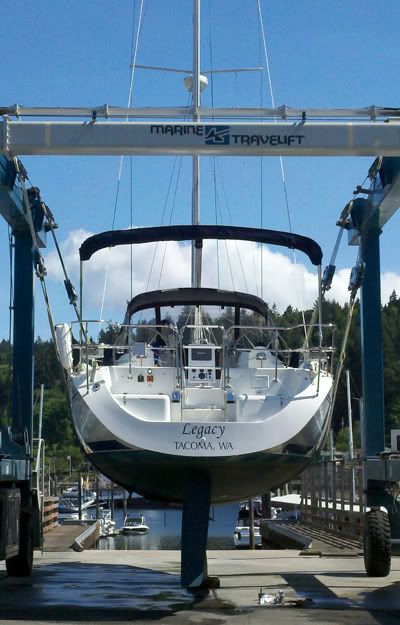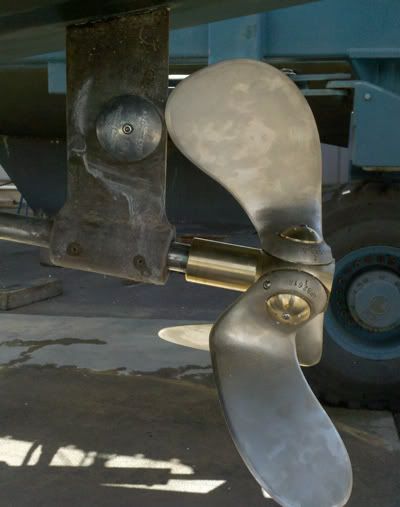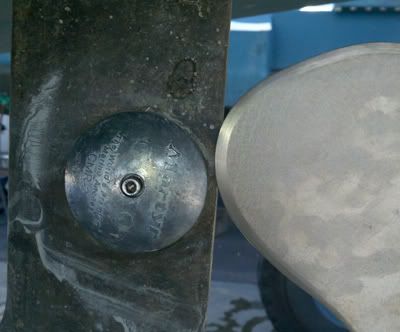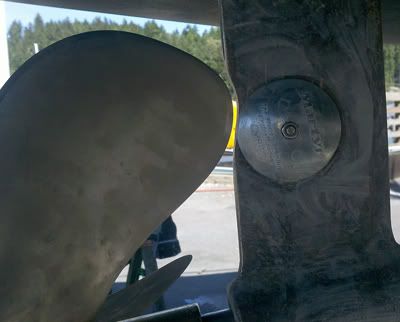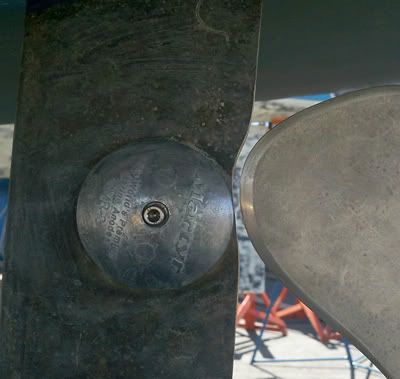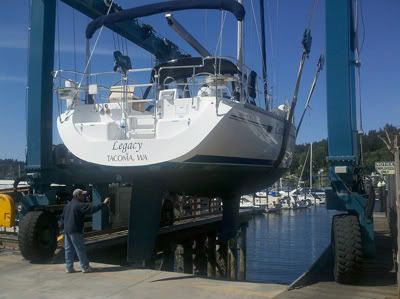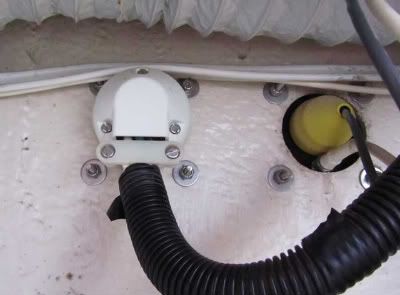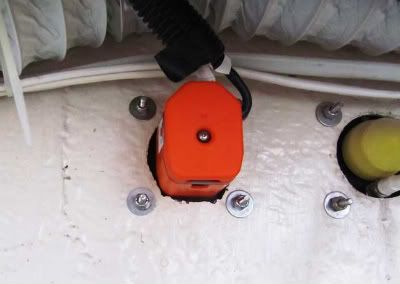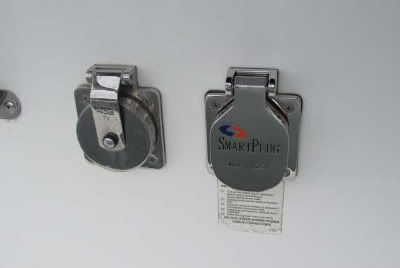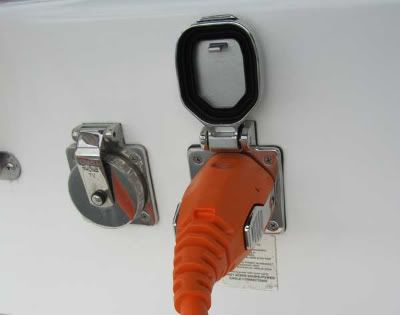I have been very unhappy with the WC Headmate toilets that came with the 2005 C400. Frankly, they are a piece of junk. I wanted to replace them with a better designed unit, but didn't want to have to do a lot of changes to the existing plumbing. Two reasons for this, I'm lazy and my wife doesn't like extra holes in the boat.
After doing a lot of research and making a general pest of myself asking questions on the C400 International Association website and the C400 Yahoo group list, I settled on the Raritan PHC. The PHC uses the same pump as the Raritan PHII, but with a compact "marine" bowl. When Defender had them on sale for $199, I jumped at it and bought one.
First, I'd like to offer a lot of thanks to Tom Sokoloski of
Juniper. He replaced his WC Headmates with Raritan PHII's and provided a lot of suggestions and advice.
Parts Needed:
- Raritan PHC Head
- 1 - 5/16 x 1.5" Stainless Steel Lag screw
- 1 SS washer
- 1 SS locking washer
- epoxy and thickener
- Life-Calk
- Super Lube
- 2 SS hose clamps for 3/4" ID hose
- 1 90 degree elbow for 3/4" ID hose
The first step is to remove the existing head. This is just a matter of making sure the sea cock is closed then disconnecting the hoses to the toilet. Try to be careful of the hoses as you disconnect them because you will reuse the hoses and you don't want to distort the hoses. Applying a bit of heat with a hair dryer can help get the hoses off the ribbed fittings. Then, unscrew the three stainless steal lag screws that attach the head to the raised pedestal. Hang on to these screws and their washers as you will reuse them. Having a container to catch the raw water from the hoses can help reduce the mess.
Here is what it looks like when you get the head removed.

You can see the three holes from the Headmate mounts. The PHC has four mounting points. I reused the farthest forward mounting hole from the Headmate for the PHC. That means that I only had to drill three additional holes instead of four, and only had to fill two of the old holes.
I brought the PHC in and test fitted in place.

Note the lag screw that I placed for test fitting. That is the hole that will be kept. With the PHC in place, I connected the waste hose temporarily.

The arrow is pointing to the elbow that leaves the head. From Raritan, this elbow is pointing down. The two bolts have to be loosened and the elbow rotated to point to the waste hose that comes out of the wall. With that hose in place and the mounting slot placed against the one bolt forward, I marked the position of the other three slots. Then I took off the waste hose and removed the head.

Here you can see the marks for the new holes. I've already filled the two unused holes with thickened epoxy. The arrow is pointing to one of the hole positions that is very close to an existing hole. This is one of the reasons I used the epoxy and simply didn't fill them with Life-Calk. I wanted that new hole to have a sturdy support around it. By the way, you will need another SS lag screw. A smart person would have taken one of the existing screws to the hardware store and simply matched it. I, on the other hand, forgot to do that and had to select a lag screw from memory. I picked a 5/16 x 2" screw. I was close, it should have been 1 1/2". You also need a washer and lock washer.
Drill the holes in the marked locations using a brad point drill, and counter sink them. I made a really stupid error at this point. If you notice, the mounting points are slots, not holes in the base of the PHC. I drilled the holes at the inside edge of the slots. This meant that when I mounted the toilet I didn't have enough room for the washer at one of the screws. It also meant that I wasn't able to get a socket around the head of both the forward and aft screw at the pump housing and so had to screw them in using an open end wrench. I was muttering to myself the entire time. See below. Use Life-Calk or equivalent in the holes to seal them.

After mounting, it is just a matter of making the hose connections. Using some Super Lube on on the hose connections makes it a lot easier to get the hoses on. When the PHC came from Raritan, it had a hose connected from the back of the pump to the back of the bowl. This is fine for above the waterline installations, but for below the waterline installations, Raritan wants an a vented loop. Fortunately, Catalina had already provided one for the head I just removed. I removed the Raritan hose from the pump to the bowl and simply connected the hoses that I had disconnected from the Headmate.

The raw water intake hose doesn't reach the pump comfortably. The Headmade had the raw water intake located in the back of the pump and the PHC has it in the front. I copied what Tom Sokoloski had done, and using a 90 elbow and 2" of hose I cut from the piece of Raritan hose I had removed from the toilet, I fashioned this.

Then it was just a matter of opening the raw water sea cock and testing for leaks. It was at this point that I found I had a large leak at the back of the pump where the flushing water goes out to the vented loop. The end of the hose had been distorted somewhat as I removed it from the Headmate and it wasn't sealing well. I simply cut off 3/4" of the end of the hose and reconnected it and it solved the problem. Before I do something like this again however, I'm going to buy a hose cutter. The OEM hoses are really tough to cut with a knife.
This is what it looks like installed. You can see the one old hole that is visible. I may get some gelcoat from Catalina to clean that up a bit.
 Another option to consider is that Raritan sells just the PHC Lower Base Assembly as a separate item. The Headmate bowl will bolt directly on this. The PHC LBA can be purchased for about $220 which makes it much less expensive than the normal PHC unit. I chose to buy the whole unit since Defender had such a good price, but otherwise would have gotten just the LBA. You can put either a "household" size bowl or a compact “marine” bowl such as the WC Headmate’s. Also, the PHII can be used instead. The reason I didn't is that the PHII base molding would have overhung the toilet pedestal
Another option to consider is that Raritan sells just the PHC Lower Base Assembly as a separate item. The Headmate bowl will bolt directly on this. The PHC LBA can be purchased for about $220 which makes it much less expensive than the normal PHC unit. I chose to buy the whole unit since Defender had such a good price, but otherwise would have gotten just the LBA. You can put either a "household" size bowl or a compact “marine” bowl such as the WC Headmate’s. Also, the PHII can be used instead. The reason I didn't is that the PHII base molding would have overhung the toilet pedestalI couldn't be happier. The pump of the PHC (The same as the PHII) works so much better than the Headmate and seems a much more sensible design.

























